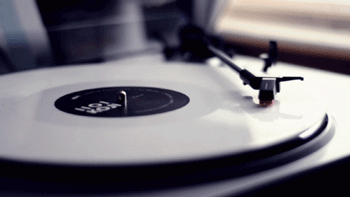The Art of Play And Display
Growing up in the 80s, early hip hop and turntablism ignited my fascination with vinyl records. When I was old enough, I purchased my first turntables in 2001. Instantly, every music store’s record display became a magnet of enthrallment.
Asking the staff what was now playing led to deeper conversations and discovering new music, which created community engagement IRL well before the days of social media. But for me, as a graphic artist by trade, I was also immersed in the medium of vinyl for its size, tangibility, and beautiful packaging.
Vintage memories of childhood aside, there isn’t much that compares to the beauty and scale of this format. Moreover, nothing can replace the experience of digging through records, finding music that excites you, placing a record on the platter, and setting the tonearm before finally pressing PLAY.
It’s elaborate. It’s pure ritual. And it forces you to engage.
As my vinyl collection slowly grew, much of it sat dormant on the shelf, mostly hidden from view; a series of thin spines with vertical type, nearly illegible on some, looking back at me as if to say – please pick me up and put me on the player so I can... breathe.
Something felt wrong.
As a listener, we share this brief physical moment with a vinyl record – just a few seconds of appreciation to take it in – until the record is on the platter and the music begins to play. The album cover is simply set aside until it’s time to go back on the shelf alongside a collection.
A lot of time and effort goes into creating the music we listen to. But what often goes unappreciated are the efforts taken to design the beautiful packaging which protects each vinyl record in the form of an album cover and sleeve.
So why not display the album cover while you play?
In hindsight, it seems like obvious logic – Now Playing. Most albums contain a song list on the back cover to follow along while you listen. Thoughtful artists include lyric sheets inside for a fuller experience. It all comes down to the simple acts of creating and engaging with the material outside of the vinyl record itself.
Nowadays, musicians and record labels can include more details and attention to the design of modern albums, and the industry continues to evolve. From the outer sleeve designs and special edition inserts to artist notes and printing embellishments, the possibilities seem endless. In some cases, we find easter eggs like photochromic ink, additional artwork inside a fully assembled album cover, and even hidden music.
Branded Intent: In 2016 Local Natives released Sunlit Youth (Loma Vista Recordings). The album features a white vinyl record, 12 full color picture inserts, and photochromic ink that is invisible to the eye until placed in the sunlight, revealing the album name on the cover.
Album packaging design aside, the vinyl record has become its own form of artwork in recent years. With the cost of vinyl production reaching new levels of affordability, we’re seeing an increase of record variations, crafted in every color of the rainbow, in opaque, translucent, splatters and swirls, even die-cut to various shapes apart from traditional circles.
Vinyl has much room for continued innovation. And when created with branded intent, vinyl paired together with its album cover artwork can form a beautiful, unique package. It just takes thoughtfulness and consideration.
Branded Intent: For the 20th anniversary of Nirvana’s Nevermind, this special edition of their famous Live At The Paramount performance from Halloween night in 2011 was released on orange vinyl for a fitting theme, along with a pumpkin shape in place of the band’s classic smiley emblem, placed on the center label. This variant also comes with a poster and a replica of the VIP pass from the show.
As a medium – as an artform – vinyl has come a long way. It’s given us more reason to appreciate it than ever before, and it’s exciting to see artists push the limits of what could be, that has yet to be seen.
Diehard record collectors and audiophiles may have a different perspective, particularly with vintage keepsakes that require proper storage or pressings designed for the preservation of sound quality (and rightly so). Haters may trash the evolution of the art form as a whole. But is it all just marketing? I’d like to think not.
For those who enjoy the mere act of listening to vinyl, and for those who appreciate well-executed design, therein lies the difference between keeping things tucked away and relishing in substance.
Artwork doesn’t sit tucked away on a shelf. Art is showcased. Art is an extension of our culture, our taste, and our identity. Vinyl gives us an opportunity to share our favorite music with others, both audibly and visually. And the infamous phrase is true: “nobody ever asks to see your MP3 collection.”
We can’t let records rot on the shelf. Vinyl deserves to be respected. We need to give props to our collections and enjoy them while we can. Records are meant to be played. Art is meant to be displayed. And vinyl is the medium to celebrate both.








